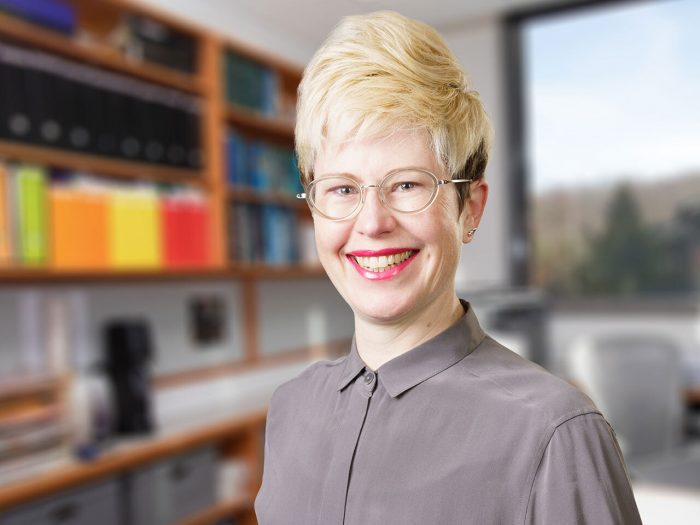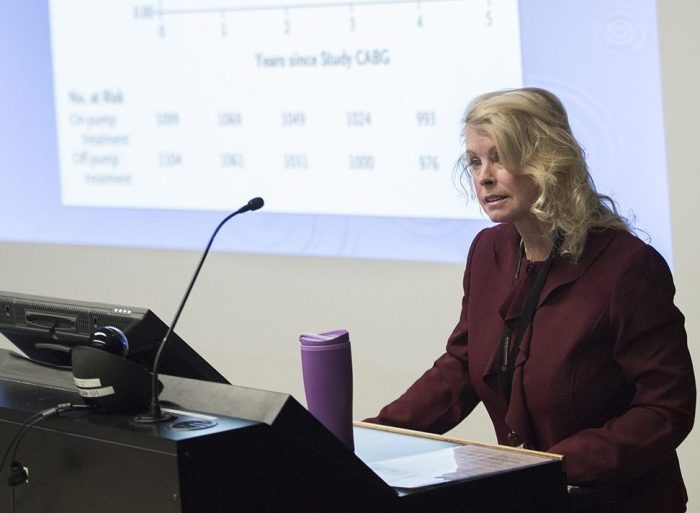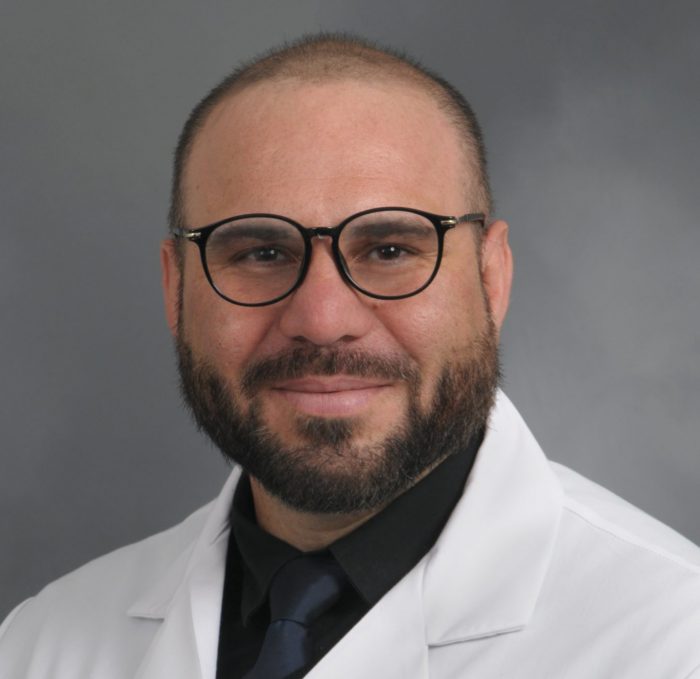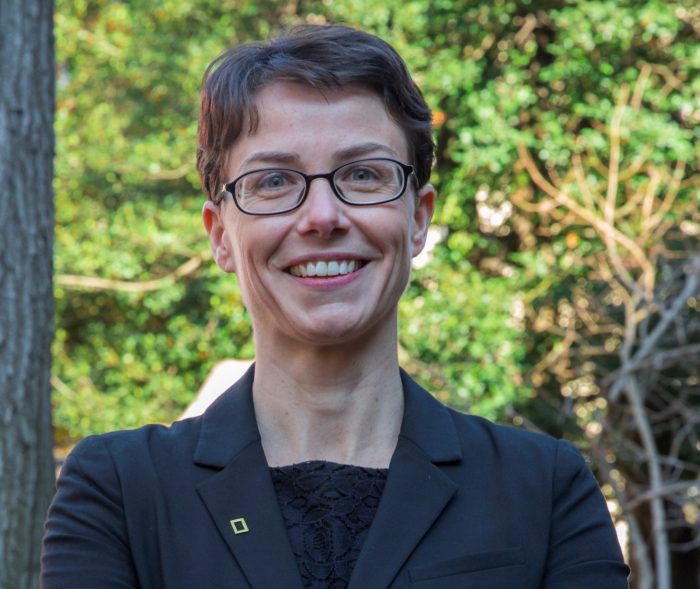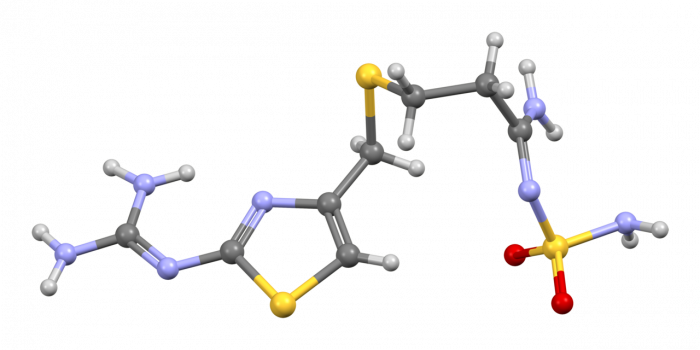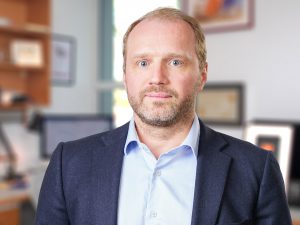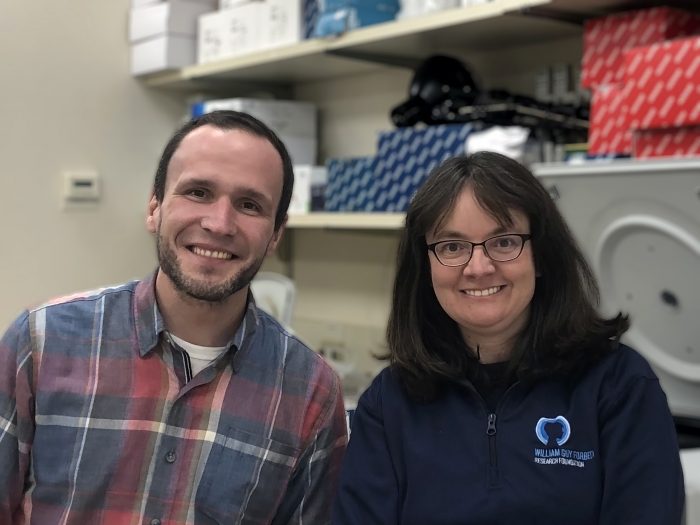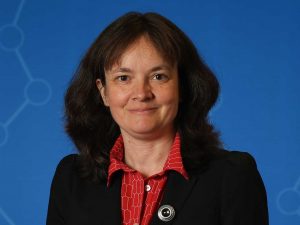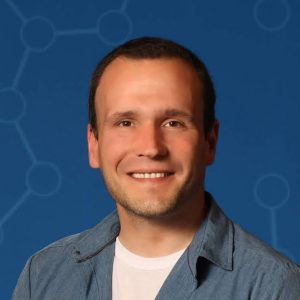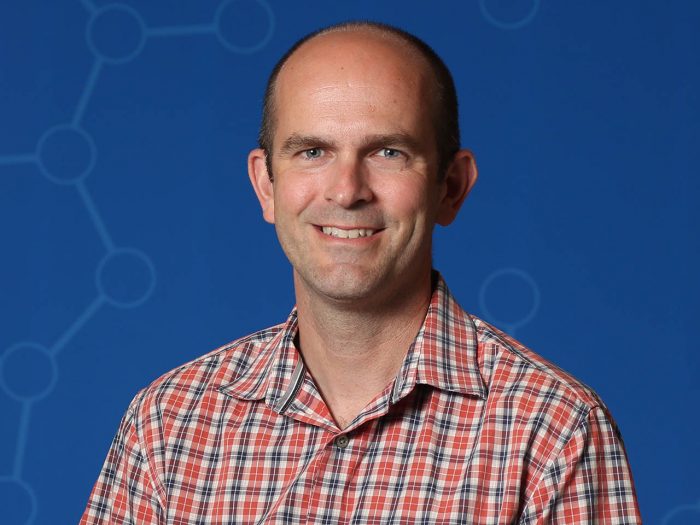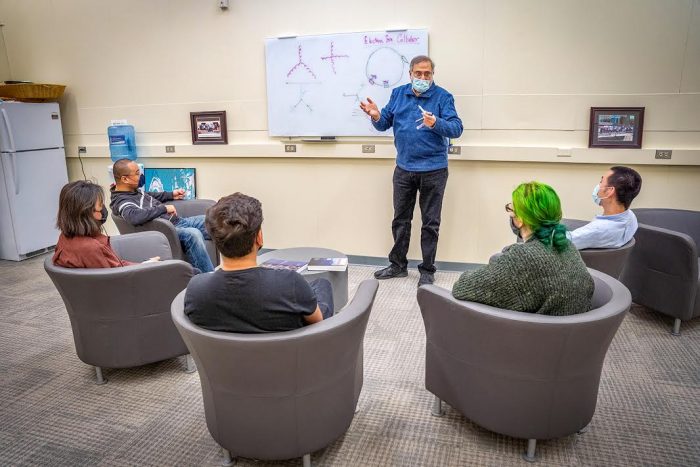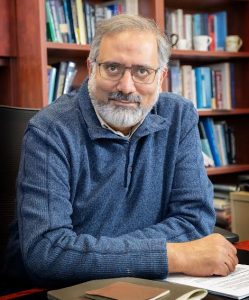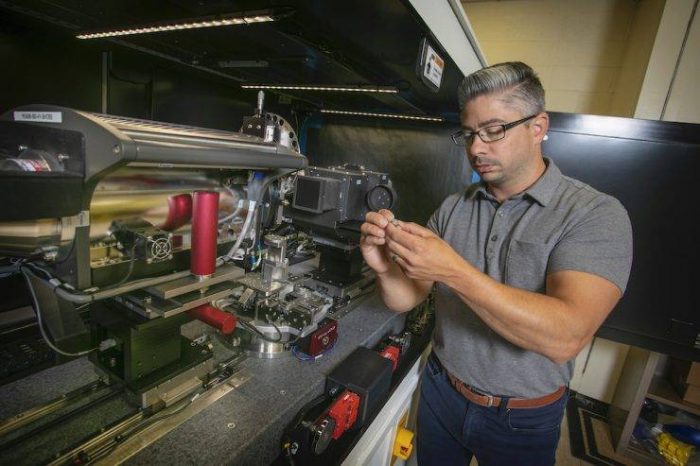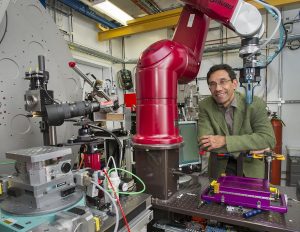By Daniel Dunaief
Estrogen plays an important role in the developing mouse brain. By facilitating connections to other brain regions, estrogen turns on genes that affect how the brain of male and female rodents develops and, down the road, how mice behave.
Cold Spring Harbor Laboratory Associate Professor Jessica Tollkuhn this week, along with graduate student Bruno Gegenhuber who recently earned his PhD, published research in the journal Nature that demonstrates how a specific region of the brain, called the bed nucleus of the stria terminalis, or BNST, responds to estrogen when the hormone receptor binds to DNA.
Male rodents convert a surge in testosterone into estrogen, which then triggers the development of more cells in the BNST than in female rodents. Later on in life, this can affect mating, parenting and aggression.
At this point, there is no data on how the BNST is masculinized in humans, although it is bigger in adult men than in women. Scientists also don’t know what the BNST does in humans. The BNST in humans is not much bigger than it is in mice.
On a broader scale, by understanding how estrogen shapes the developing brain differently in males and females, Tollkuhn hopes to discover the progression of behavioral disorders that are often more prevalent in one gender than the other. Boys have more neurodevelopmental disorders than girls, such as autism, language delays, dyslexia and attention deficit hyperactivity disorder, or ADHD. Girls, on the other hand, particularly after puberty, have twice the incidence of major depression compared to their contemporary male counterparts, Tollkuhn said.
Tollkuhn is part of a collaboration, funded by the Simons Foundation, to study autism. The CSHL researcher doesn’t believe autism originates in any particular brain region, describing it as a complex disorder with many causes.
“I do think that sex differences in brain regions such as the BNST can intersect with other genetic and environmental factors to increase vulnerability to developing certain symptoms in boys,” she explained.
In rodents, estrogen protects against programmed cell death. In the BNST and a few other brain regions, there are sex differences in cell death that are dependent on hormone exposure. A male mouse without exposure to estrogen would not have a larger BNST.
History of her research
Tollkuhn has been looking for estrogen receptor alpha in the brain since she started her post doctoral research at UCSF in 2007. The genome-wide targets of this receptor in breast cancer cells were first described in 2006.
Back then, the technology wasn’t good enough to capture estrogen receptor alpha binding in the small, sparse population of cells. These receptors, after all, aren’t in most brain cells.
The receptors for a hormone that plays such an important developmental role sit in the same place in males and females.
Tollkuhn’s assumption going into this study was that estrogen receptor alpha would have access to different genes in adult males and females, based on the different life histories of when the two sexes had prior estrogen exposure, which was transient in the developing male brain and fluctuated in females after puberty.
That, however, was not the case. Giving females and males the same hormones caused the genome to respond the same way.
“It’s really the differences of which hormones are present in the circulation that determines what genes are active,” she explained in an email.
Future studies
Tollkuhn is interested in the variation of hormones, receptors and gene responses between individuals within a single species and among various species.
She suggested that a spectrum of variability in sexual differentiation likely exists within and across species. The differences in the way these hormones and receptors shape individual development “is advantageous” because the plasticity in behaviors makes a species more resilient to subtle or dramatic changes in the environment, enabling an organism to alter its behaviors depending on internal states such as hunger, time of year, or place in a social hierarchy.
Tollkuhn would also like to know the genomic targets of androgen receptor, within the BNST and elsewhere. She would like to look at where estrogen receptors and androgen receptor are expressed in the developing human brain. She also plans to study estrogen receptor beta, which is “poorly understood even outside the brain.”
Studying these receptors and the genes they alter could enhance an understanding of cognition and mood, as well as measures of stress and anxiety.
Women with estrogen receptor positive breast cancer sometimes take a medication that blocks estrogen in the breast and in the brain. A side effect of this medicine, however, is that it causes women to have menopausal-type symptoms, such as disrupted sleep, thermoregulatory issues like “hot flashes,” and mood disorders.
Tollkuhn and Cassandra Greco, a graduate student at Stony Brook University, will investigate how different breast caner medications that target estrogen receptor alpha differentially affect its recruitment to the genome.
Tollkuhn plans to test the three most commonly prescribed treatments to see how they are affecting the brain and what they are doing to the estrogen receptor regulated genes in the brain.
She hopes one day to help develop a therapy with more specific targets that doesn’t have the same side effects.
Science origin story
When she was young, Tollkuhn liked reading books about biology, but didn’t discover her interest in research until she attended Mills College in Oakland, CA.
She got her first research experience working at biotech companies during her undergraduate studies. At that point, she learned that she was capable of doing challenging experiments.
In addition to continuing to read about a range of other research experiments, Tollkuhn enjoys the challenge of research.
“The joy of this job is that I get paid to ask questions that are interesting,” she said.

